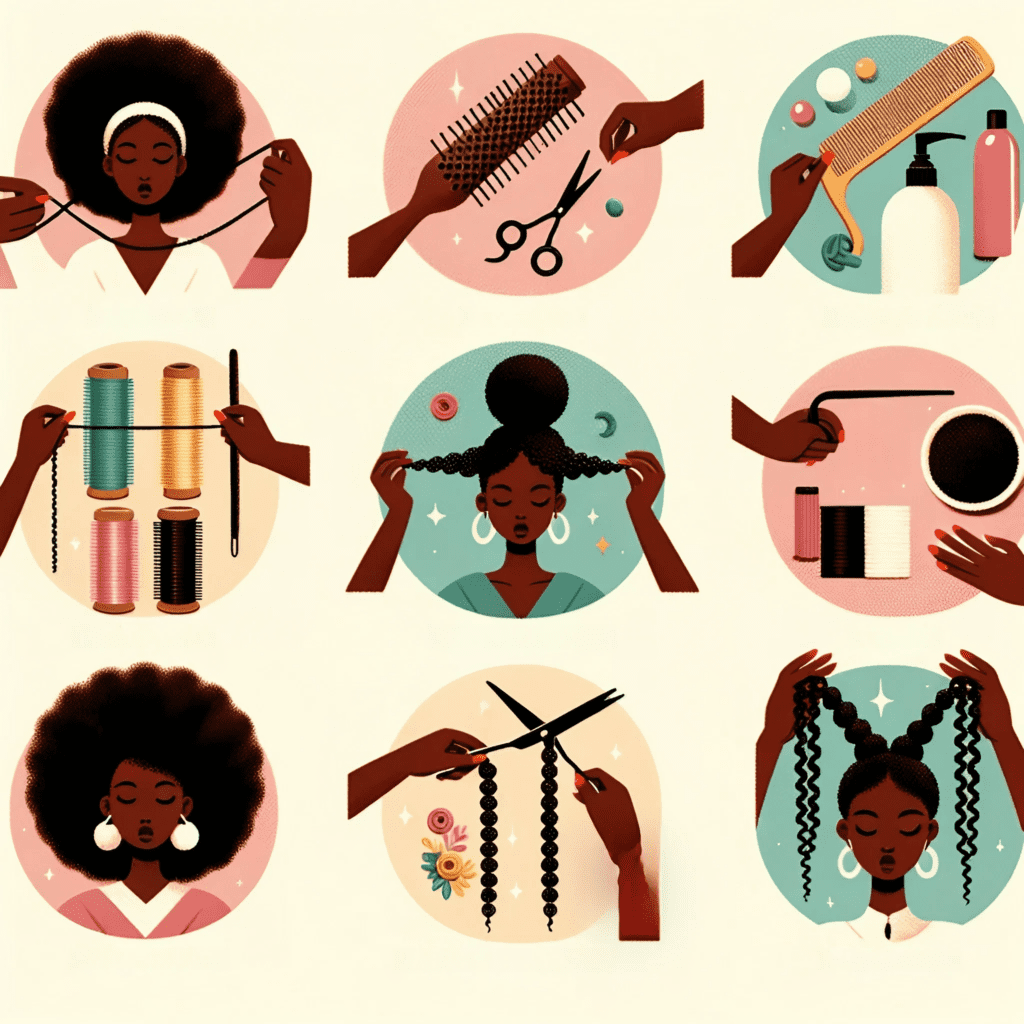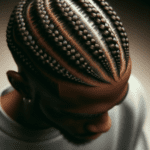9 Essential Steps: Preparing Natural Hair for Braiding
Introduction
Braiding, a timeless and elegant hairstyle, has deep roots in history and spans across cultures. But the secret behind those beautifully braided hairstyles? Proper hair preparation. Ensuring your natural hair is ready for the braiding process not only results in a stunning final look but also promotes long-term hair health. Dive into the essential steps to prepare your natural hair for braiding!
Table of Contents
1. Understanding Your Hair Type
Every person’s hair is unique, and understanding your hair type is the cornerstone of effective hair care.

| Hair Type | Description |
|---|---|
| Type 1 | Straight |
| Type 2 | Wavy |
| Type 3 | Curly |
| Type 4 | Coily |
- Why It Matters: Knowing your hair type helps tailor your preparation routine, ensuring maximum health and minimizing potential damage.
- Tailored Routine: For instance, type 4C hair might require more intensive moisturizing than type 3A hair.
2. Thoroughly Wash and Condition
Clean hair and scalp are foundational for any braiding style.
| Key Step | Product Recommendation | Benefit |
|---|---|---|
| Wash | Sulfate-free Shampoo | Gently cleanses without stripping natural oils |
| Condition | Moisturizing Conditioner | Smoothens and hydrates hair |
| Deep Condition | Protein-based Deep Conditioner | Strengthens and restores hair’s elasticity |
- Role of a Clean Scalp: A clean scalp prevents itchiness after braiding and promotes overall scalp health.
3. Detangling with Care

Tangled hair can lead to breakage during the braiding process.
“Detangling is not just a step, it’s about preserving hair health, minimizing breakage, and setting the stage for a beautiful braid.”
- Risks of Braiding Tangled Hair: Braiding without detangling can lead to hair thinning and increased tension at the roots.
- Tools & Techniques: Wide-tooth combs or detangling brushes, coupled with a leave-in conditioner, can ease the process.
- Wet vs. Dry Detangling: While some prefer detangling on wet hair to reduce breakage, others find dry detangling more effective. It’s essential to find what works best for your hair type.
Tip: Always start detangling from the tips of your hair, working your way up to the roots. This method reduces breakage and makes the process smoother.
4. Strengthening Treatments
Hair strength is pivotal, especially when it’s about to be styled in braids.
- Role of Protein: Hair is primarily made up of protein, specifically keratin. Over time, hair can lose its strength due to various factors.
- Protein Treatments: These treatments temporarily fill gaps in the hair cuticle, making it stronger and more resilient.
- Signs Your Hair Needs Protein: Excessive stretchiness when wet, a lack of shine, and increased breakage.
HealthLine has a good guide on tips to strengthen your natural hair
5. Moisturizing and Sealing
Moisture retention is a key aspect of hair health, especially for natural hair.
- Understanding Hair Porosity: Porosity refers to your hair’s ability to absorb and retain moisture. Knowing your hair’s porosity can guide you in choosing the right products.
- Layering Products: The L.O.C method stands for Liquid, Oil, Cream – a sequence recommended for moisturizing and sealing in moisture.
- Hydration Tips: Drink plenty of water, and consider incorporating hydrating masks into your routine.
6. Trimming Split Ends
Maintaining the ends of your hair ensures the overall health and appearance of your braids.
| Sign | Solution |
|---|---|
| Noticeable splits | Trim immediately |
| Knots in the hair | Gentle detangling |
| Thinning ends | Regular trims |
- Importance of Trimming: Split ends can travel up the hair shaft if not addressed, leading to further damage.
7. Stretching the Hair

Stretching natural hair can make the braiding process smoother and reduce the chances of hair tangling.
- Benefits of Stretching: Reduces shrinkage, showcases true hair length, and creates a uniform texture for braiding.
- Safety First: If using heat methods like blow-drying, always use a heat protectant.
8. Scalp Care and Protection
A healthy scalp is the foundation for healthy hair growth.
“Did you know? Scalp massages can stimulate blood flow, promoting hair growth and overall scalp health.”
- Common Scalp Issues: Issues like dandruff, itchiness, and inflammation can be addressed with the right care and products.
- Essential Oils: Oils like tea tree, peppermint, and lavender can soothe and nourish the scalp.
9. Test Braiding and Hair Assessment
Before diving into the main braiding process, a test can save a lot of potential heartache.
- Strand Test: Take a small section of hair and braid it. If you notice any issues or discomfort, address those before full braiding.
- Deciding on Braid Size: Depending on hair health and strength, decide on an appropriate braid size.
Conclusion
Proper preparation is the key to stunning and long-lasting braids. By following these steps, you ensure not only a beautiful outcome but also promote the overall health of your natural hair.






